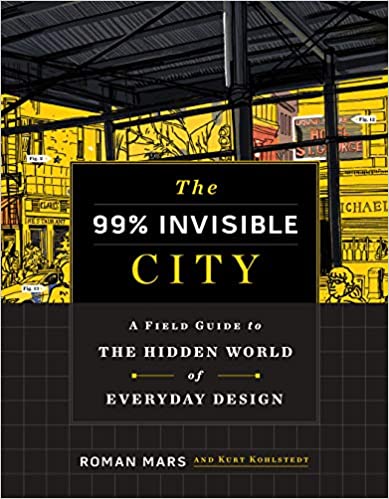You have /5 articles left.
Sign up for a free account or log in.
 The 99% Invisible City: A Field Guide to the Hidden World of Everyday Design by Roman Mars and Kurt Kohlstedt
The 99% Invisible City: A Field Guide to the Hidden World of Everyday Design by Roman Mars and Kurt Kohlstedt
Published in October 2020
While backpacking with my future wife around Europe after our second year of graduate school, I took her on a tour of the Musée des égouts de Paris. Otherwise known as the Paris Sewer Museum.
We also spent part of our honeymoon at the (now-closed) Baltimore Public Works Museum.
Romantic, right?
My happiest memory of a family trip to Disney World was when I ditched my family and spent the day touring the underground structures and behind-the-scenes areas in Disney's Keys to the Kingdom Tour. (Now suspended due to COVID.)
The 99% Invisible City is the perfect book for all of us infrastructure nerds.
If you are the type to get curious about why manhole covers are round? And then what's below that manhole? Then this is the book for you.
The book is an outgrowth of the popular 99% Invisible podcast. Sometimes I think I'm the last human alive not to have their own podcast, much less not listen to podcasts. My problem with podcasts is that if you are going to spend time listening, why not listen to an audiobook?
But if I were to listen to podcasts, 99% Invisible would make the list.
The book's strengths are its breadth. Not interested in the origins of traffic lights? No worries, in a few minutes, you will be learning about breakaway signposts, electrical substations, ventilation buildings, fake facades, sidewalk markings, historical plaques and many other elements of the built environment.
Alas, no stories of our invisible universities.
The most memorable retreat that I participated in with my colleagues at the academic center where I work was a guided tour of our campus cogeneration steam plant. The tour culminated in a walk through the steam tunnels (now being converted to hot water tunnels) that live beneath our campus buildings.
Our universities depend on a hidden infrastructure to run. Power, heating, cooling, waste disposal, water, networking, food delivery and much else are at the core of higher education operations.
We seldom think about the infrastructure on which campus operations depend.
Is there an academic equivalent to the 99% Invisible book and podcast?
What are you reading?








